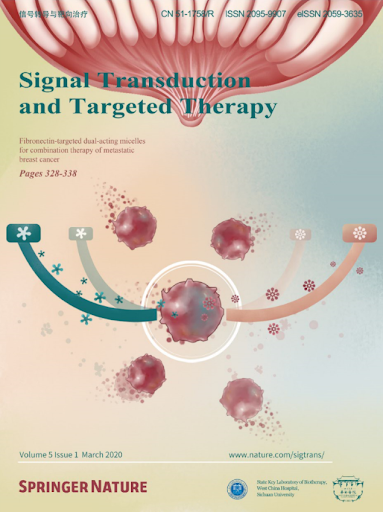蛋白质中赖氨酸残基的修饰:维生素C的一种新的翻译后效应
IF 40.8
1区 医学
Q1 BIOCHEMISTRY & MOLECULAR BIOLOGY
引用次数: 0
摘要
在最近发表在《细胞》杂志上的一篇文章中,他和他的同事报告说,维生素C (VitC)改变蛋白质和肽中的赖氨酸残基,从而形成vityl -lysine,这一过程被他们称为vitcyation。他们发现信号传导和转录激活因子-1 (STAT1)的卵化增加了其磷酸化,从而促进癌细胞中干扰素通路的激活和抗肿瘤免疫本文章由计算机程序翻译,如有差异,请以英文原文为准。

Modification of lysine residues in proteins: a novel posttranslational effect of vitamin C
In a recent article published in Cell, He and colleagues reported that vitamin C (VitC) modifies lysine residues in proteins and peptides, thereby forming vitcyl-lysine, a process they have called vitcylation. They show that vitcylation of signal transducer and activator of transcription-1 (STAT1) increases its phosphorylation and thereby promotes interferon pathway activation in cancer cells and anti-tumor immunity.1
求助全文
通过发布文献求助,成功后即可免费获取论文全文。
去求助
来源期刊

Signal Transduction and Targeted Therapy
Biochemistry, Genetics and Molecular Biology-Genetics
CiteScore
44.50
自引率
1.50%
发文量
384
审稿时长
5 weeks
期刊介绍:
Signal Transduction and Targeted Therapy is an open access journal that focuses on timely publication of cutting-edge discoveries and advancements in basic science and clinical research related to signal transduction and targeted therapy.
Scope: The journal covers research on major human diseases, including, but not limited to:
Cancer,Cardiovascular diseases,Autoimmune diseases,Nervous system diseases.
 求助内容:
求助内容: 应助结果提醒方式:
应助结果提醒方式:


